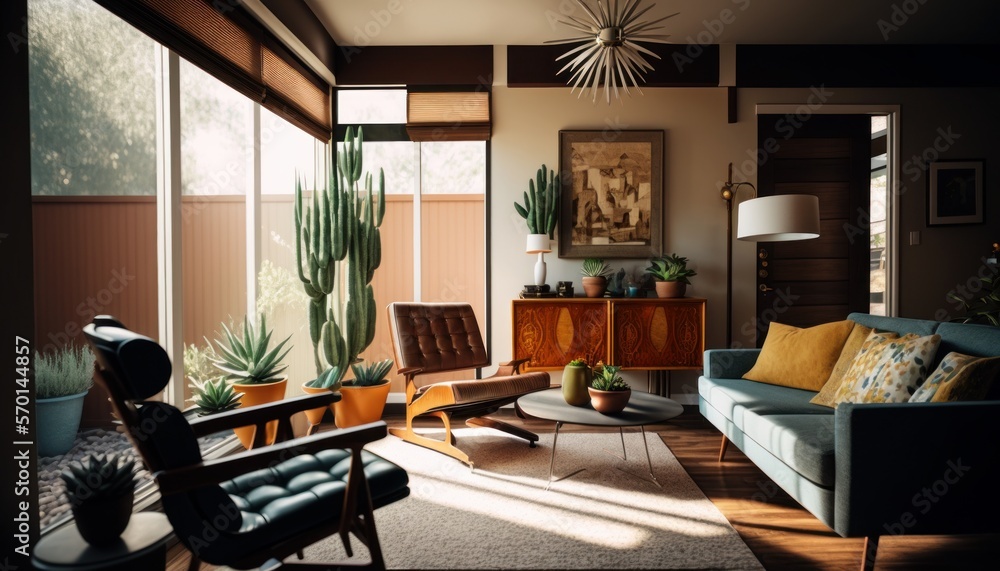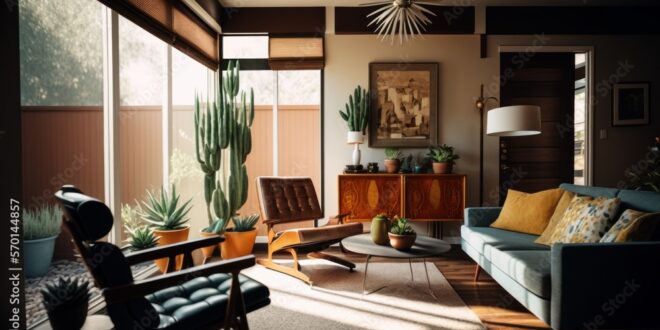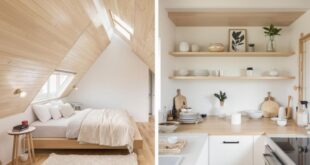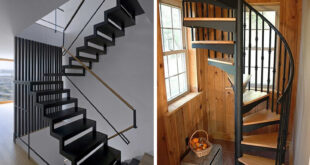
Mid-Century Modern Design: A Timeless Aesthetic
Mid-century modern design, often abbreviated as MCM, is a significant movement in interior, product, graphic design, architecture, and urban development that was popular from roughly 1945 to 1969. This style emerged in the post-World War II era and is characterized by clean lines, organic shapes, a love for different materials, and an emphasis on functionality. Its enduring appeal lies in its ability to blend seamlessly into contemporary settings while retaining a distinct vintage charm. Understanding the nuances of mid-century modern design is essential for anyone looking to incorporate this classic aesthetic into their home or appreciate its influence on modern design trends.
The Origins and Evolution of Mid-Century Modern
The roots of mid-century modern can be traced back to the Bauhaus movement in Germany, which emphasized functional design and the integration of art, craft, and technology. When many Bauhaus designers fled Europe during the rise of Nazism, they brought their ideas to the United States, where they found fertile ground for innovation. The post-war economic boom and the availability of new materials like plywood, plastic, and fiberglass further fueled the movement. Mid-century modern design was not just a style; it was a response to the changing needs and aspirations of a generation eager to embrace the future.
Key Influences
- Bauhaus: Emphasized functionality, simplicity, and the integration of art and technology.
- Scandinavian Design: Focus on natural materials, clean lines, and functional elegance.
- International Style: Sleek, minimalist architecture with an emphasis on form and function.
Characteristics of Mid-Century Modern Design
Several defining characteristics distinguish mid-century modern design from other styles. These elements combine to create a look that is both aesthetically pleasing and highly functional.
Clean Lines and Simplicity
One of the most recognizable features of mid-century modern design is its emphasis on clean lines and simplicity. Furniture pieces often feature smooth, unadorned surfaces and geometric shapes. This minimalist approach contributes to a sense of openness and airiness in a space. The focus is on the essential form and function of each piece, without unnecessary ornamentation.
Organic Shapes
While clean lines are prominent, mid-century modern design also embraces organic shapes. Curves and rounded edges are used to soften the overall look and add a touch of naturalism. This blend of geometric and organic forms creates a balanced and harmonious aesthetic. Think of the iconic Eames Lounge Chair, with its molded plywood and supple leather, as a prime example of this principle.
Use of Natural and Man-Made Materials
Mid-century modern designers were adept at combining natural materials like wood, leather, and wool with man-made materials such as plastic, fiberglass, and metal. This juxtaposition of textures and materials adds visual interest and reflects the era’s embrace of technological innovation. Wood is often used for furniture frames and accents, while plastic and fiberglass are used for chairs, tables, and other decorative elements.
Emphasis on Functionality
Functionality is at the heart of mid-century modern design. Furniture pieces are designed to be not only beautiful but also practical and comfortable. Storage solutions are often integrated seamlessly into furniture, maximizing space and minimizing clutter. The emphasis on functionality reflects a desire to create living spaces that are both stylish and livable. [See also: Space Saving Furniture Ideas]
Integration with Nature
Mid-century modern design often seeks to integrate the indoors with the outdoors. Large windows, open floor plans, and the use of natural light are common features. Indoor plants are also frequently incorporated to bring a touch of nature into the living space. This connection to nature creates a sense of tranquility and harmony.
Iconic Mid-Century Modern Designers and Their Contributions
Several influential designers played a key role in shaping the mid-century modern aesthetic. Their innovative ideas and timeless designs continue to inspire designers and homeowners today.
Charles and Ray Eames
Charles and Ray Eames were a husband-and-wife design team who made significant contributions to furniture design, architecture, and film. Their iconic Eames Lounge Chair, molded plywood chairs, and wire chairs are instantly recognizable symbols of mid-century modern design. Their work is characterized by its innovative use of materials, ergonomic design, and timeless appeal. They believed that design should be both functional and beautiful, and their creations reflect this philosophy.
George Nelson
George Nelson was a prolific designer, writer, and educator who played a key role in shaping the direction of American modernism. He is best known for his iconic clocks, such as the Ball Clock and the Sunflower Clock, as well as his innovative storage solutions and furniture designs. Nelson’s work is characterized by its playful use of color and form, as well as its emphasis on functionality and innovation. He believed that design should be accessible to everyone and that it should improve the quality of everyday life.
Eero Saarinen
Eero Saarinen was a Finnish-American architect and designer known for his neo-futuristic style. His most famous designs include the Gateway Arch in St. Louis, the TWA Flight Center at JFK Airport, and the Tulip Chair and Womb Chair. Saarinen’s work is characterized by its sweeping curves, sculptural forms, and innovative use of materials. He believed that architecture and design should be expressive and emotionally engaging, and his creations reflect this vision.
Isamu Noguchi
Isamu Noguchi was a Japanese-American artist and designer known for his sculptures, furniture, and lighting designs. His most famous design is the Noguchi Coffee Table, which features a biomorphic glass top and a sculptural wooden base. Noguchi’s work is characterized by its organic forms, minimalist aesthetic, and integration of art and design. He believed that design should be both functional and beautiful and that it should reflect the harmony between nature and culture.
Integrating Mid-Century Modern into Your Home
Incorporating mid-century modern design into your home can be a rewarding experience. Here are some tips to help you achieve the look:
Start with Key Furniture Pieces
Invest in a few iconic mid-century modern furniture pieces, such as an Eames Lounge Chair, a Noguchi Coffee Table, or a Saarinen Tulip Chair. These pieces will serve as focal points in your living space and set the tone for the overall design. Look for pieces with clean lines, organic shapes, and a mix of natural and man-made materials. [See also: Best Furniture Brands of 2024]
Choose a Neutral Color Palette
Mid-century modern design typically features a neutral color palette with pops of color. Use shades of white, gray, beige, and brown as your base colors, and then add accents of orange, yellow, green, and blue. This color scheme creates a sense of calm and sophistication while allowing the furniture and accessories to stand out. Consider incorporating natural wood tones to add warmth and texture to the space.
Incorporate Natural Elements
Bring the outdoors in by incorporating natural elements into your living space. Use large windows to maximize natural light, and add indoor plants to bring a touch of greenery to the room. Consider using natural materials such as wood, stone, and wool to create a warm and inviting atmosphere. The goal is to create a seamless connection between the indoors and the outdoors.
Accessorize with Mid-Century Modern Details
Complete the look by accessorizing with mid-century modern details. Look for vintage lamps, geometric artwork, and retro-inspired textiles. Consider adding a vintage record player or a mid-century modern bar cart to add character and personality to the space. The key is to choose accessories that complement the overall design and reflect your personal style. The beauty of mid-century modern is that it allows for a high degree of personalization while still maintaining its core aesthetic.
Declutter and Simplify
Mid-century modern design is all about simplicity and functionality. Declutter your living space and remove any unnecessary items. Focus on creating a clean and organized environment that promotes a sense of calm and well-being. The goal is to create a space that is both stylish and functional, without feeling cluttered or overwhelming. By embracing minimalism, you can truly appreciate the beauty and elegance of mid-century modern design. The lasting appeal of mid-century modern stems from its ability to create spaces that are both aesthetically pleasing and highly functional. Its emphasis on clean lines, organic shapes, and a mix of natural and man-made materials makes it a timeless style that can be adapted to suit a variety of tastes and preferences. Whether you are a seasoned design enthusiast or a newcomer to the world of interior design, exploring the principles of mid-century modern can be a rewarding and inspiring experience.
The Enduring Appeal of Mid-Century Modern
The mid-century modern style continues to be popular today for several reasons. Its clean lines and simple forms make it easy to integrate into a variety of spaces, from apartments to houses. The emphasis on functionality ensures that pieces are not only beautiful but also practical. The use of natural materials adds warmth and texture to a space, creating a welcoming and comfortable environment. Furthermore, the timelessness of mid-century modern design means that it never goes out of style. It is a classic aesthetic that can be enjoyed for years to come. Mid-century modern furniture and design elements are highly sought after, and many original pieces are considered valuable collector’s items.
In conclusion, mid-century modern design is more than just a style; it is a philosophy. It is a way of life that emphasizes simplicity, functionality, and a connection to nature. By understanding the principles of mid-century modern design, you can create a living space that is both stylish and comfortable, reflecting your personal taste and enhancing your quality of life. The influence of mid-century modern can be seen in many aspects of contemporary design, from architecture to product design. Its enduring appeal is a testament to its timeless beauty and its ability to adapt to changing needs and preferences. Whether you are looking to furnish your entire home in the mid-century modern style or simply add a few key pieces, you can be sure that you are investing in a design aesthetic that will remain relevant and beautiful for years to come. [See also: Modern Home Decor Trends]
 Nimila
Nimila




